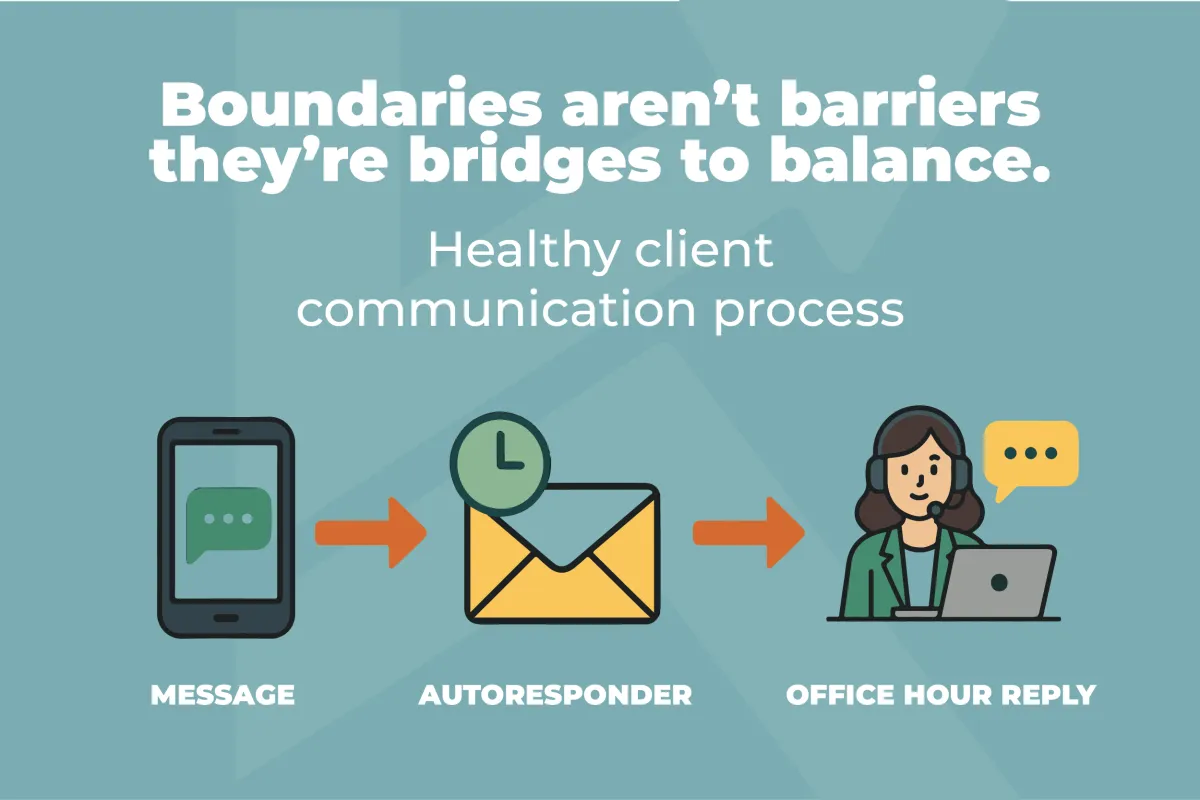
The Importance of Setting Boundaries to Reclaim Your Time and Prevent Burnout
You started your business for freedom—but instead, you’re answering client messages at 10 PM, skipping lunch, and feeling like you're always “on.” Sound familiar? Without clear boundaries, your business starts running you—not the other way around.
Let’s talk about how to set boundaries that protect your time, energy, and well-being—so you can run a thriving service business and have a life you love.
The Importance of Setting Boundaries to Reclaim Your Time and Prevent Burnout
Why Boundaries Are a Business Essential (Not a Luxury)
Common Signs You Need Better Boundaries
Types of Boundaries Every Service Business Owner Should Set
How to Communicate Boundaries with Clients (Without Guilt)
Why Boundaries Are a Business Essential (Not a Luxury)
Boundaries aren’t about being inflexible or unkind—they’re about sustainability. When you don’t set limits, burnout isn’t a matter of if—it’s when. As a service business owner, your time and energy are your most valuable resources. Protecting them isn’t selfish. It’s smart business.
Strong boundaries:
Prevent mental and emotional exhaustion
Build healthier client relationships
Create more focused, productive workdays
Allow you to lead your business—not just react to it
Common Signs You Need Better Boundaries
You feel anxious when your phone pings after hours
You struggle to unplug, even on weekends
You say “yes” to client requests that stretch your limits
You’re constantly rushing, behind, or overwhelmed
You resent parts of your work that used to bring joy
If any of these resonate, it’s time to realign how your business supports your life—not the other way around.
Types of Boundaries Every Service Business Owner Should Set
1. Time Boundaries
Decide in advance:
When you work
When you respond to emails or messages
When you're available for meetings or calls
✨ Example: Only check emails between 10 AM–4 PM, and block your calendar on Fridays for CEO time.
2. Communication Boundaries
Define where and how clients should contact you—email, client portal, Slack, etc.—and set clear expectations.
✨ Example: Let clients know turnaround times, availability hours, and response windows in your welcome packet.
3. Scope Boundaries
Avoid “scope creep” by having clearly outlined deliverables, timelines, and revision policies in your service agreement.
✨ Example: “This service includes two rounds of revisions. Additional changes will be billed separately.”
4. Emotional Boundaries
Your clients’ problems are not always yours to solve. Create space to care without carrying.
✨ Example: Practice pausing before responding to emotionally charged messages and establish scripts for tough conversations.
How to Communicate Boundaries with Clients (Without Guilt)
Boundaries only work if you communicate them—clearly and confidently.
Include them in your onboarding materials
Reinforce them in welcome calls or kickoff meetings
Model them consistently in how you show up
Use friendly but firm language like:
“To provide my best work, I check and respond to emails during business hours (M–Th, 10 AM–4 PM).”
Clients will respect your boundaries when you respect them yourself.
What Happens When You Set (and Stick to) Your Boundaries
You feel calmer and more focused
Clients become more independent and respectful
You regain time for creativity, strategy, and personal life
You create a business that supports your energy—not drains it
Boundaries give you space to lead, grow, and enjoy your business again.
✅ Ready to Reclaim Your Time and Prevent Burnout?
Let’s build a business structure that supports your life, not just your to-do list.
👉 Book a Free Discovery Call to get personalized guidance on designing a business that respects your time
👉 Explore our Services to learn how we help service business owners simplify and scale without burnout
